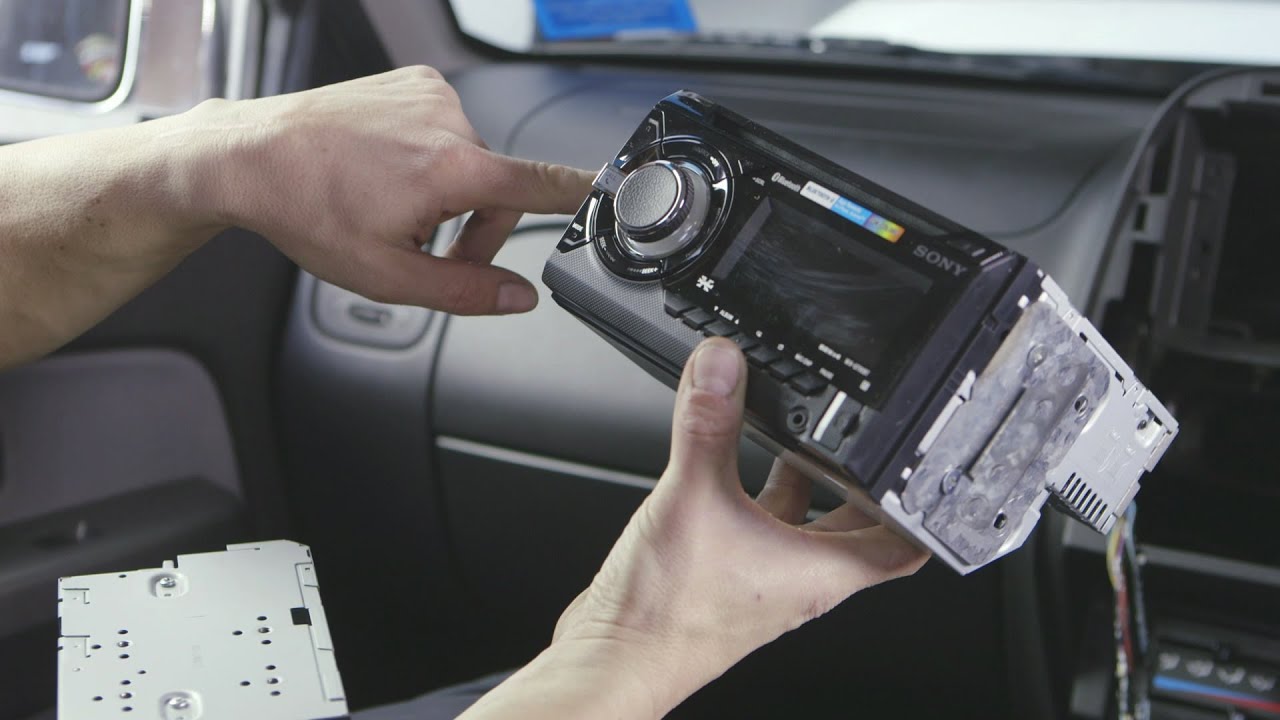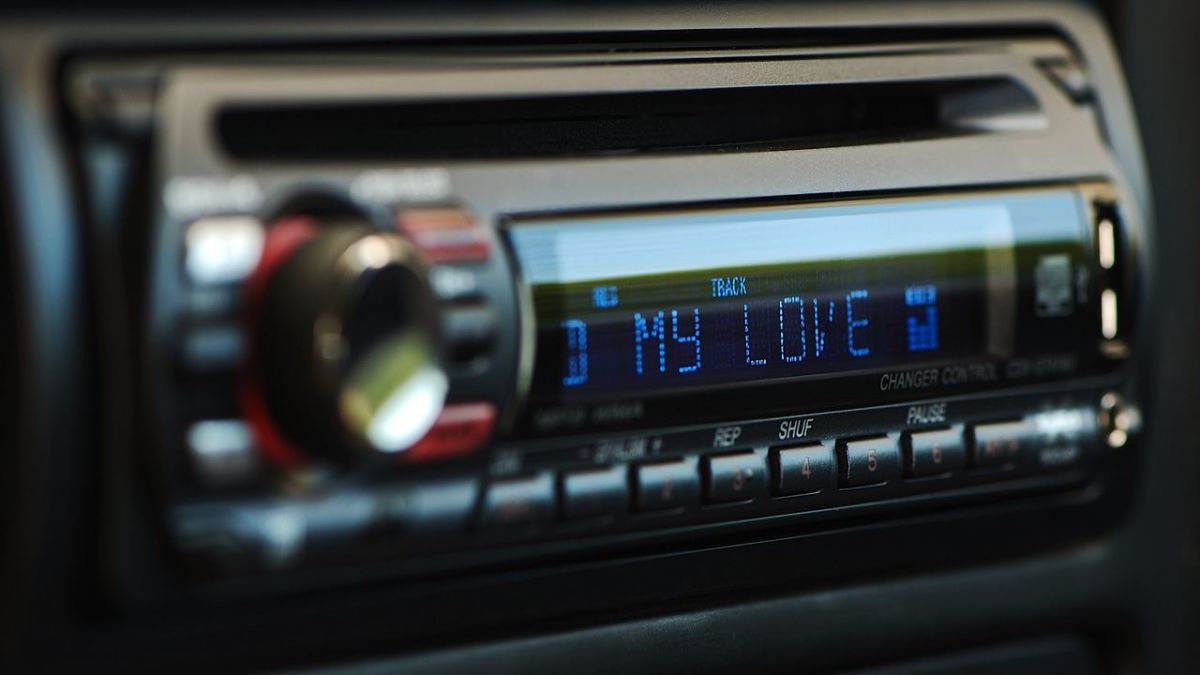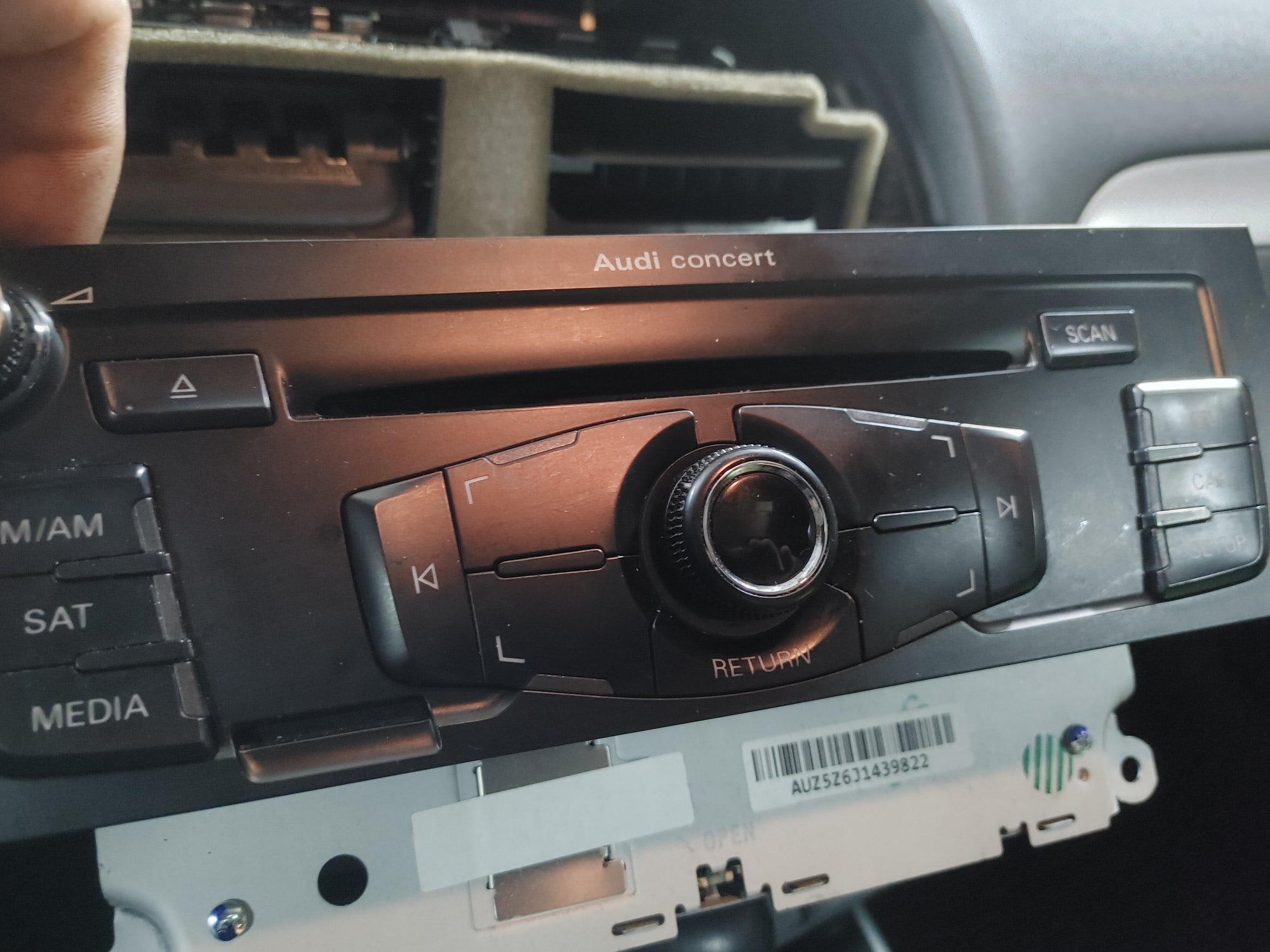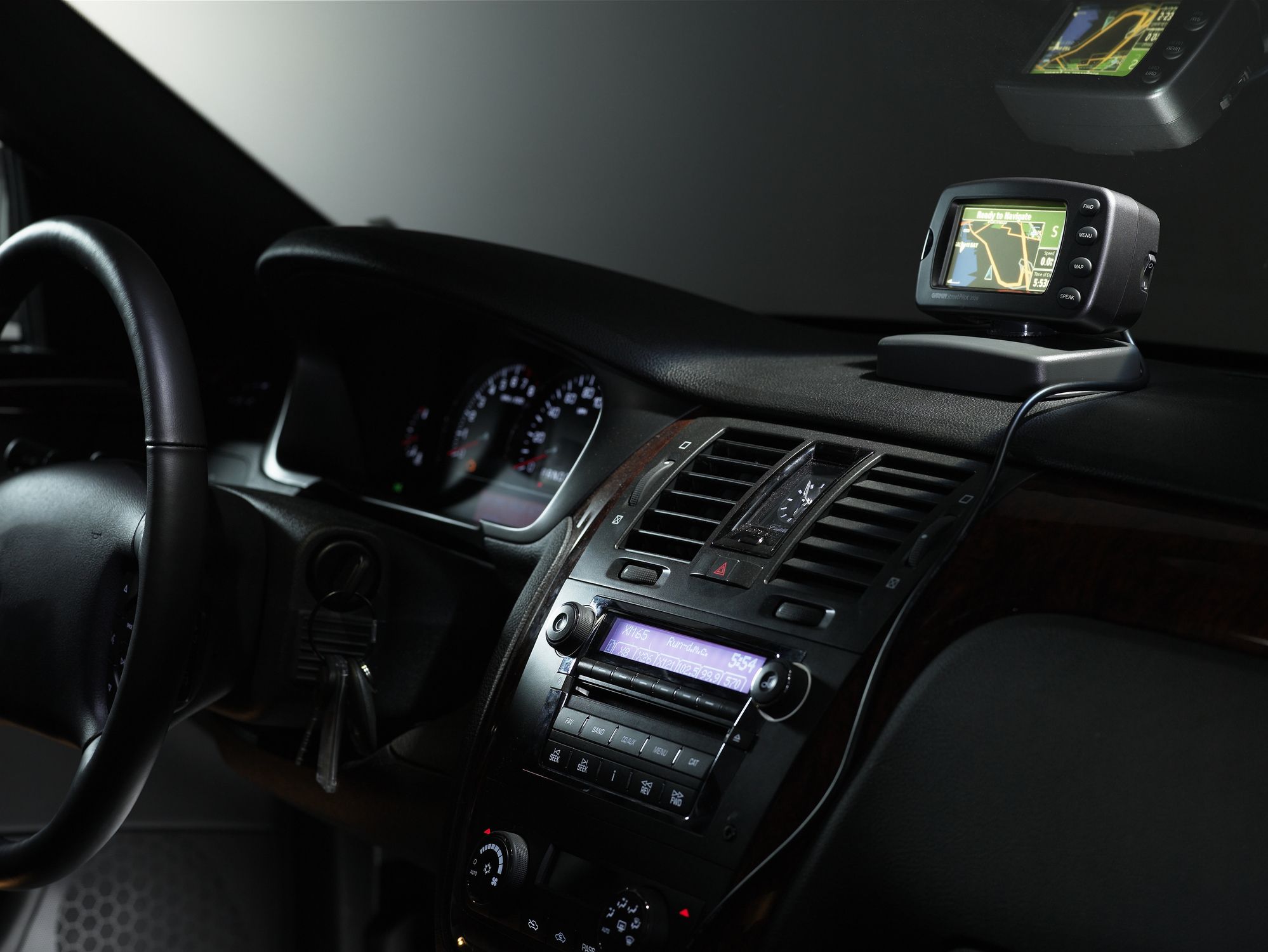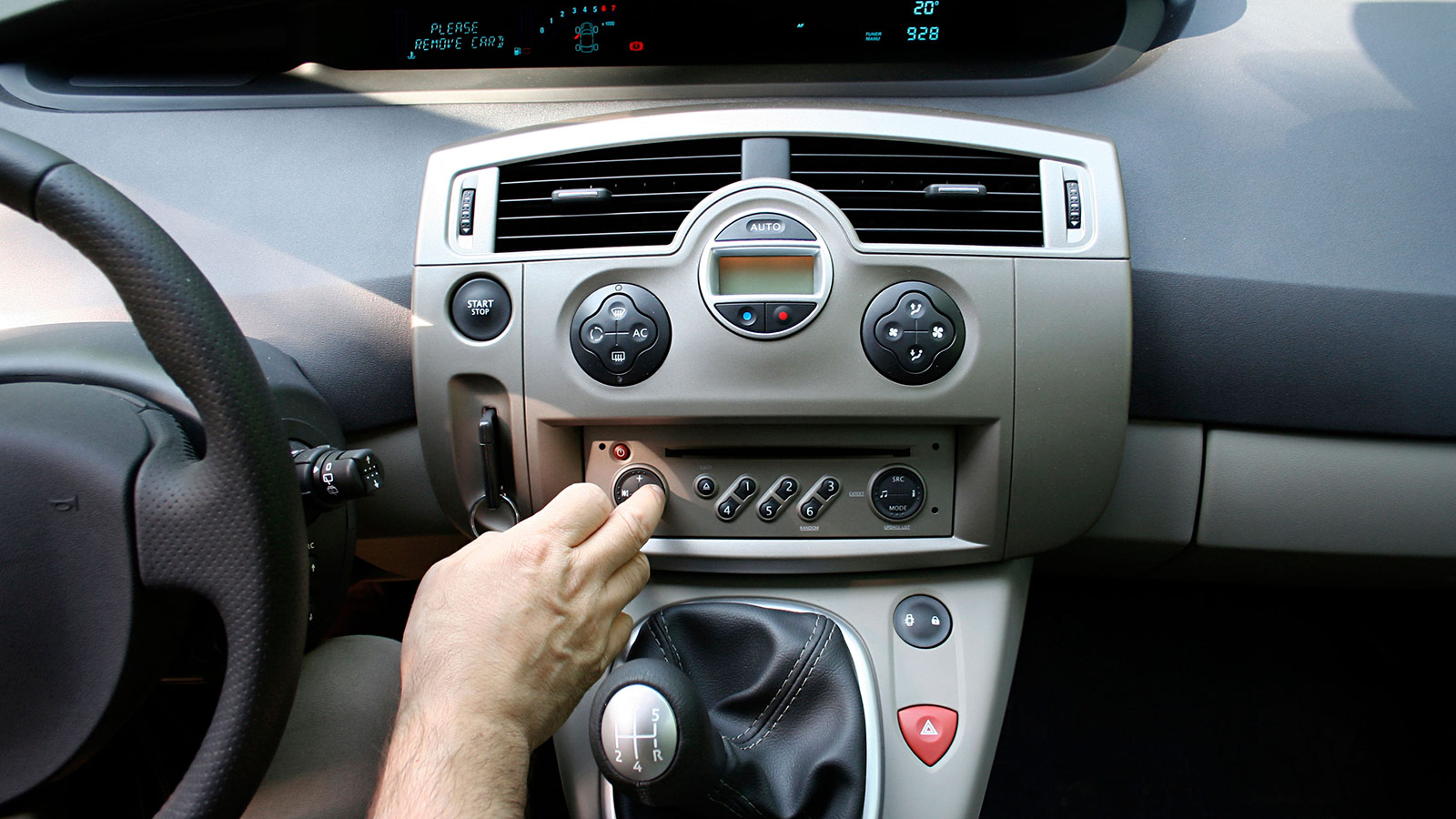Home>Devices & Equipment>Radio>How To Fix Static Radio In Car
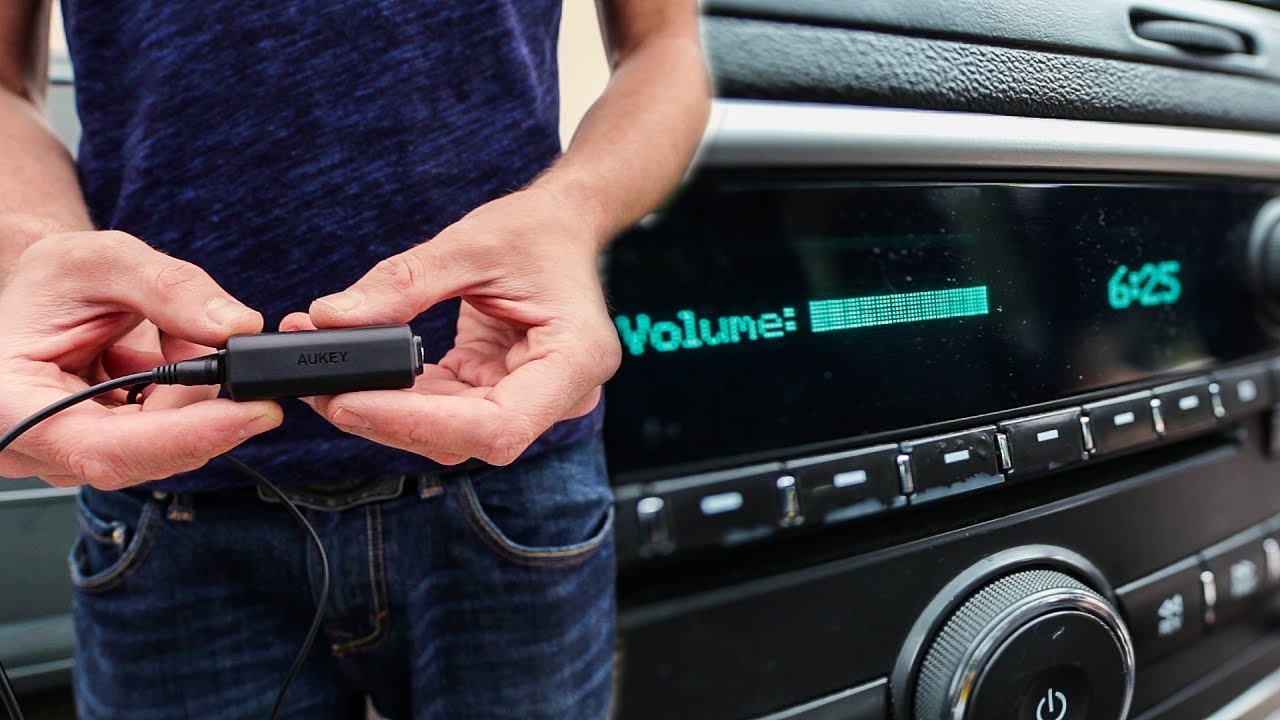

Radio
How To Fix Static Radio In Car
Modified: January 22, 2024
Learn how to fix static in your car's radio with our easy step-by-step guide. Say goodbye to annoying static interference and enjoy crystal-clear radio reception.
(Many of the links in this article redirect to a specific reviewed product. Your purchase of these products through affiliate links helps to generate commission for AudioLover.com, at no extra cost. Learn more)
Table of Contents
Introduction
Welcome to the world of radio, where music, news, and entertainment come to life at the touch of a button. But what happens when that button brings nothing but static to your ears? A static-filled radio can quickly put a damper on your driving experience, making even the most enjoyable road trip feel like a journey through a sea of interference. Fear not, for we are here to help you navigate through the static and bring back the clear and crisp sound you deserve.
Static in a car radio can have various causes, ranging from simple issues like a loose connection to more complex problems like antenna damage. Understanding these common causes is the first step towards fixing the problem and ensuring a smooth and enjoyable listening experience. In this article, we will explore some of the most common causes of static and provide you with practical solutions to resolve them.
Whether you’re a music lover, news junkie, or sports enthusiast, a static-free radio is essential for enjoying your favorite content on the road. So, let’s dive in and unravel the mysteries of static-filled radios in cars, working towards a solution that will bring back the crystal-clear sound to your daily commute or long-distance drive.
Common Causes of Static in Car Radio
Static in a car radio can be frustrating, but understanding the common causes can help you diagnose and fix the issue effectively. Here are some of the most prevalent reasons for static in a car radio:
- Weak or Poor Antenna Signal: One of the primary culprits behind static is a weak or poor antenna signal. This can be caused by a loose or damaged antenna, obstructed signal reception, or antenna misalignment.
- Poorly Connected Antenna: Another common cause of static is poorly connected antenna cables. Over time, these cables can become loose or corroded, leading to reduced signal quality and increased interference.
- Grounding Issues: A faulty ground connection can also result in static in the car radio. If the ground wire is loose or disconnected, it can cause interference and disrupt the signal reception.
- Coaxial Cable Problems: The coaxial cable that connects the antenna to the car’s radio receiver can experience wear and tear over time. Damaged or worn-out cables can cause signal loss and static in the radio.
- Antenna Damage: Physical damage to the antenna, such as bends, cracks, or breaks, can compromise its ability to receive signals properly and result in static-filled radio broadcasts.
- Car Battery Interference: Electrical interference from the car’s battery or charging system can also introduce static into the radio. This can occur due to poor grounding, faulty wiring, or electrical noise from other components.
Identifying the root cause is crucial in fixing the static in your car radio. In the following sections, we will explore solutions to these common issues and guide you towards restoring crystal-clear sound.
Checking the Antenna
The antenna is a crucial component that receives radio signals and broadcasts them through your car’s radio. If the antenna is not functioning properly, it can lead to static-filled radio broadcasts. Here are the steps to check your antenna:
- Inspect the antenna: Start by visually inspecting the antenna for any visible damage, such as bends, cracks, or breaks. If you notice any damage, it’s likely that the antenna needs replacement.
- Ensure proper alignment: Check if the antenna is properly aligned and pointing in the right direction. Incorrect alignment can result in a weak signal reception and static. Adjust the antenna if necessary.
- Tighten connections: Make sure that the antenna cable is securely connected to the antenna base and the car’s radio. Even a slightly loose connection can cause signal loss and introduce static. Tighten any loose connections.
- Check cable condition: Examine the antenna cable for any signs of damage, such as frayed wires or cuts. If the cable is damaged, it may need to be replaced to restore proper signal reception.
- Test with another antenna: If you have access to another antenna, you can try connecting it to your car’s radio. This will help determine if the issue lies with the antenna itself or with other components.
By checking and ensuring the proper functioning of your antenna, you can eliminate any potential issues related to its condition or alignment. However, if the antenna appears to be damaged or the problem persists, it may be necessary to explore further solutions.
Cleaning the Antenna Connections
Dirty or corroded antenna connections can cause poor signal reception and introduce static in your car radio. Cleaning the antenna connections is a simple yet effective way to improve the connection quality. Here’s how to do it:
- Disconnect the antenna: Start by disconnecting the antenna cable from the radio or antenna base. This will allow you easier access to clean the connections.
- Inspect the connections: Take a close look at the antenna cable connector and the receiving end on the radio or antenna base. Check for any dirt, corrosion, or debris on the connectors.
- Clean the connectors: Use a soft cloth or a small brush to gently clean the connectors. Be careful not to apply too much pressure or use abrasive materials that could damage the connectors.
- Remove corrosion: If you notice any corrosion, you can use a small amount of isopropyl alcohol or a specialized electrical contact cleaner to remove it. Apply the cleaner to a cloth or cotton swab and gently rub the affected areas.
- Dry and reassemble: Allow the connectors to dry completely before reassembling the antenna. Make sure the connectors are securely fastened and free from any dirt or debris.
Cleaning the antenna connections can improve the signal quality and reduce static in your car radio. It’s a simple maintenance step that can make a significant difference in your listening experience. However, if cleaning the connections doesn’t resolve the issue, further troubleshooting may be necessary.
Checking the Ground Wire
The ground wire in your car’s radio system plays a crucial role in providing a stable electrical connection and reducing interference. If the ground wire is loose or disconnected, it can lead to static in the radio. Here’s how to check the ground wire:
- Locate the ground wire: The ground wire is typically connected to the metal frame of the car or the radio’s chassis. It’s often a black or brown wire that is bolted or screwed onto a metal surface.
- Check the wire connection: Inspect the ground wire to ensure it is securely connected. Make sure the bolt or screw holding the wire is tight and that there is no corrosion or damage to the wire.
- Tighten the connection: If the ground wire is loose, use a suitable wrench or screwdriver to tighten the bolt or screw. Ensure a tight connection between the ground wire and the metal surface.
- Inspect for damage: Look for any signs of damage, such as frayed or broken wires, along the length of the ground wire. If you notice any damage, it may be necessary to replace the wire.
- Test the ground wire: With the ground wire properly connected, start the car and turn on the radio. Check if the static has reduced or disappeared. If the static persists, further troubleshooting may be required.
Ensuring a solid ground connection can significantly improve the quality of your radio’s signal reception and minimize static. By performing these simple checks and repairs, you can eliminate any potential issues with the ground wire and enjoy a clearer listening experience. However, if the problem persists, it may be necessary to investigate other components of the radio system.
Inspecting the Coaxial Cable
The coaxial cable is responsible for transmitting the radio signals from the antenna to the radio receiver. Over time, this cable can experience wear and tear, leading to signal loss and static in the car radio. Here’s how to inspect the coaxial cable:
- Visual inspection: Start by visually examining the coaxial cable for any visible damage. Look for cuts, kinks, frayed wires, or exposed conductors along the length of the cable.
- Bend test: Gently bend the cable along its length to check for any breakage or internal damage. If you notice any significant changes in the cable’s shape or cuts in the outer insulation, it may be necessary to replace the cable.
- Check connector integrity: Ensure that the connectors at both ends of the coaxial cable are securely attached and in good condition. Loose or damaged connectors can cause signal loss and introduce static.
- Inspect for moisture: Moisture can seep into the coaxial cable and degrade the signal quality. Look for signs of moisture damage, such as rust or discoloration, on the connectors or along the cable.
- Replace if necessary: If you identify any issues with the coaxial cable, it’s recommended to replace it with a new one. A damaged cable can significantly impact signal reception and lead to persistent static in the radio.
Inspecting the coaxial cable allows you to identify any potential issues that may be causing static in your car radio. By ensuring the cable is in good condition and free from damage, you can improve the signal transmission and minimize interference. However, if replacing the coaxial cable doesn’t solve the problem, further troubleshooting may be required.
Replacing the Antenna
If you have tried various troubleshooting steps and are still experiencing static in your car radio, it may be necessary to replace the antenna. Over time, antennas can suffer damage or wear out, leading to poor signal reception and interference. Here’s how to replace the antenna:
- Choose a compatible replacement: Find a replacement antenna that is compatible with your specific car make and model. Consider factors such as frequency range, antenna type (e.g., whip antenna or shark fin antenna), and installation requirements.
- Disconnect the old antenna: Start by disconnecting the cable or wiring of the old antenna from the radio or antenna base. Follow the manufacturer’s instructions and any specific steps for your car’s make and model.
- Remove the old antenna: Depending on the type and location of the antenna, you may need to unscrew it or remove it from its mounting bracket. Use the appropriate tools and techniques to safely remove the old antenna without causing any damage.
- Install the new antenna: Carefully follow the installation instructions provided with the new antenna. This may involve attaching the new antenna to the mounting bracket, connecting the cable or wiring, and securing it in place.
- Test the new antenna: With the new antenna installed, turn on the car’s radio and check for any improvement in signal quality. Ideally, the static should be reduced or eliminated, indicating that the new antenna is functioning properly.
Replacing the antenna can be a more involved process compared to other troubleshooting steps. If you’re unsure about the process or want to ensure a proper replacement, it may be best to consult a professional or seek assistance from an automotive service provider.
Remember, a good-quality antenna is key to receiving clear and static-free radio broadcasts. By replacing a damaged or worn-out antenna, you can enhance your listening experience and enjoy a better range of radio channels and content.
Checking the Car Battery
The car battery plays a vital role in powering the electrical components of your vehicle, including the radio. If there are issues with the car battery, it can cause electrical interference and introduce static into the radio. Here’s how to check the car battery:
- Inspect the battery connections: Start by visually inspecting the battery terminals and cables for any signs of corrosion or loose connections. Corroded terminals can hinder the flow of electricity and affect the performance of the radio.
- Clean the terminals: If you notice corrosion on the battery terminals, use a mixture of baking soda and water to clean them. Scrub gently with a wire brush or a toothbrush to remove the corrosion, and rinse with water afterward. Dry the terminals thoroughly.
- Tighten loose connections: Ensure that the battery cables are securely connected to the terminals. Use a wrench or pliers to tighten any loose connections and ensure a good electrical connection.
- Check the battery voltage: Use a multimeter to measure the voltage of the car battery. A healthy battery should have a voltage reading of around 12.6 volts. If the voltage is significantly lower, it may indicate a weak or dying battery.
- Test the battery’s performance: You can perform a load test on the battery to assess its overall health and functionality. This test measures how well the battery can hold a charge and deliver power. It’s best to use a battery tester or seek assistance from a professional for an accurate assessment.
By checking the car battery and ensuring its proper functioning, you can eliminate any potential electrical interference that may be causing static in the radio. If you find any issues with the battery or suspect a weak battery, it may be necessary to replace it to restore optimal performance.
Remember to exercise caution when handling the battery and adhere to safety guidelines provided by the manufacturer. If you’re unsure about the battery inspection or want to ensure accurate testing, it’s recommended to seek assistance from a qualified automotive professional.
Ensuring Proper Grounding
Proper grounding is essential for a well-functioning car radio system. A solid ground connection ensures stable electrical performance and reduces the risk of interference and static. Here’s how to ensure proper grounding:
- Inspect the ground wire: Locate the ground wire connected to the car radio or chassis. Check for any signs of damage, such as frayed or loose wires, and ensure that it securely connects to a metal surface.
- Clean the grounding point: If there is corrosion or rust where the ground wire connects to the metal surface, clean it using a wire brush or sandpaper. Ensure a clean and solid contact between the ground wire and the metal surface.
- Consider using a grounding kit: In some cases, a grounding kit can be installed to improve the ground connection and reduce interference. These kits typically include additional grounding cables and connectors specifically designed for improved electrical grounding.
- Verify electrical component grounding: Check the grounding of other electrical components in the car, such as the amplifier or aftermarket audio equipment. Improper grounding of these components can introduce electrical noise and interfere with the car radio.
- Seek professional assistance if necessary: If you’re uncertain about the grounding system in your car or unable to identify the issue, it’s recommended to consult a professional car audio installer or an automotive electrician. They have the expertise to diagnose and resolve any grounding issues effectively.
Proper grounding ensures a stable electrical connection and minimizes the potential for static in your car radio. By following these steps, you can improve the grounding of your radio system and enjoy a clearer and more enjoyable listening experience.
Keep in mind that the grounding requirements can differ depending on the vehicle make and model, as well as any aftermarket modifications. Consulting the car’s manual or seeking expert advice can provide additional guidance for your specific situation.
Seeking Professional Help
If you have gone through the troubleshooting steps mentioned earlier and are still experiencing static in your car radio, it may be time to seek professional assistance. Professional help can provide valuable expertise and advanced diagnostics to resolve the issue effectively. Here’s why it’s worth considering:
- Specialized Knowledge: Car audio professionals have extensive knowledge and experience working with radio systems. They are familiar with the intricacies of different car models and can quickly identify and diagnose complex issues that may be causing static.
- Advanced Equipment: Professional technicians have access to specialized tools and equipment that can help them pinpoint the exact source of the problem. These tools can perform detailed signal analysis, identify electrical faults, and provide precise adjustments for optimal performance.
- Warranty Considerations: If your car radio is still under warranty, seeking professional assistance ensures that the repairs and adjustments are performed by authorized technicians. This helps preserve the warranty and ensures that the work meets the manufacturer’s specifications.
- Detailed Inspection: Professionals can conduct a thorough inspection of the entire radio system, including the wiring, amplifier, head unit, and other components. They can identify potential issues that may have been missed during your own troubleshooting process.
- Expert Recommendations: Car audio professionals can provide expert recommendations based on their assessment of the system. They can suggest appropriate upgrades, replacements, or modifications to improve the overall performance and eliminate static in the radio.
While seeking professional help may involve some additional cost, it can potentially save you time and frustration in the long run. Professional technicians can provide tailored solutions to your specific car radio issues, ensuring a reliable and enjoyable listening experience.
When choosing a professional, consider reputable car audio shops or certified technicians with good customer reviews and a proven track record. This will help ensure that you receive quality service and get the most out of your radio system.
Remember, experienced professionals can offer valuable insight and solutions that may not be readily available to the average DIYer. If troubleshooting on your own hasn’t yielded the desired results, seeking professional help is a worthwhile step to resolve the static in your car radio.
Conclusion
A static-filled car radio can be a frustrating experience, hindering your enjoyment of music, news, and entertainment while on the road. However, with a systematic approach and a bit of troubleshooting, you can eliminate static and restore the clarity and crispness to your car radio.
We have explored some of the common causes of static in a car radio, including weak antenna signals, poorly connected antenna cables, grounding issues, coaxial cable problems, and even battery interference. By checking the antenna, cleaning the connections, inspecting the ground wire, examining the coaxial cable, and ensuring proper grounding, you can address many of the common issues contributing to static-filled broadcasts.
If your efforts to resolve the static issue on your own aren’t successful, seeking professional help is a wise choice. Car audio professionals possess the knowledge, tools, and expertise to diagnose and resolve complex radio issues effectively, ensuring a reliable and enjoyable listening experience.
By following the steps outlined in this article and considering the suggestions provided, you can troubleshoot and resolve static in your car radio, restoring clear and uninterrupted sound for your driving pleasure. Remember, a well-tuned and static-free radio can enhance your road trips, making them more enjoyable and memorable.
So, don’t let static be a roadblock in your radio experience. Take the necessary steps to eliminate static and get back to enjoying your favorite music, news, and entertainment while cruising down the road.


